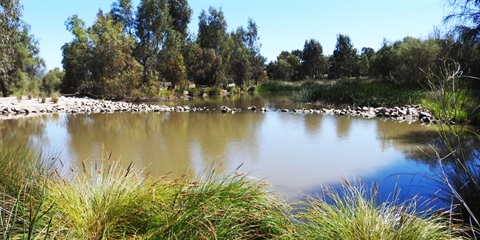Waterwise landscaping and wetlands

Council understands the importance of sustainable practices to conserve water and enhance urban green spaces in out municipality. Through careful plant selection and mindful design, we can minimise irrigation needs while maximising the beauty and resilience of our parks and gardens. Take the time to explore our waterwise parks and wetlands, where every drop counts towards a greener, more sustainable future.
Waterwise landscaping
Waterwise landscaping minimises or eliminates the need for extra irrigation. This urban design encourages using plants suited to our local environment. Care is also taken to avoid losing water through evaporation and run-off.
Council is committed to incorporating these principles into all new developments and planting designs throughout the municipality. Choosing drought-tolerant plants ensures vibrant greenery and color year-round, even during drought periods.
Explore our waterwise parks and gardens in Swan Hill for inspiration:
- Slater Park, Cockerell Court, Swan Hill
- Michael Holmes Park, Marraboor Street, Swan Hill
- Steggall Park, Parkside Avenue, Swan Hill
- George Lay Park – corner Murlong and Pye streets, Swan Hill
Wetlands
Wetlands are a critical part of our natural environment.
They reduce the impact of floods, soak up pollutants, filter urban runoff and improve water quality. Wetlands also provide a unique setting for a diverse range of plants and animals. Wetland developments in our municipality are an inventive way to recycle urban stormwater, removing pollutants from runoff.
These areas offer recreational amenities such as walking tracks and scenic views. Moreover, wetlands serve as crucial habitats and water sources for parklands.
Take the time to visit and enjoy these areas in the Swan Hill region:
- Main drain wetland system in Milloo Street, Swan Hill
- Turtle Lagoon, Lake Boga
- Round Lake, Lake Boga
- Barry Steggall Park, Swan Hill